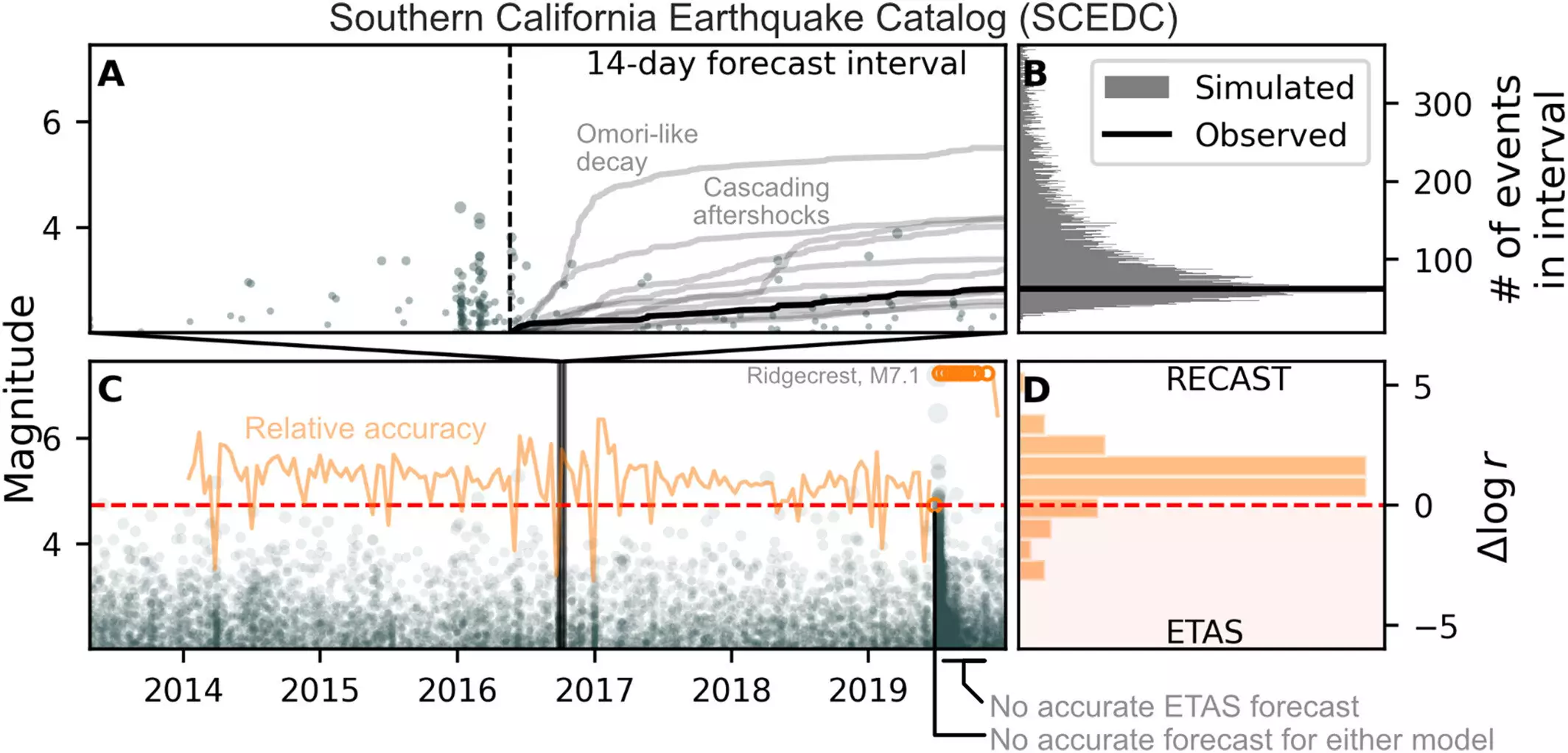For decades, earthquake aftershock forecasting models have remained stagnant, struggling to cope with the vast amount of seismic data now available. However, a team of researchers from the University of California, Santa Cruz and the Technical University of Munich has developed an innovative solution. The Recurrent Earthquake foreCAST (RECAST) model utilizes deep learning techniques to provide more accurate and scalable predictions. In a recently published paper titled “The Future of Earthquake Aftershock Forecasting: A Deep Learning Approach” in Geophysical Research Letters, the team demonstrates the superiority of the RECAST model over the Epidemic Type Aftershock Sequence (ETAS) model, currently used for earthquake forecasting.
The ETAS model, designed in the 80s and 90s, was effective with limited data. However, advancements in seismological technology have generated massive earthquake catalogs, overwhelming the capabilities of the ETAS model. As Professor Emily Brodsky from UC Santa Cruz explains, “We’ve started to have million-earthquake catalogs, and the old model simply couldn’t handle that amount of data.” This prompted the need for a more advanced and adaptable model.
The development of the RECAST model marks a significant breakthrough in earthquake aftershock forecasting. Unlike its predecessor, the RECAST model can efficiently analyze vast amounts of data and adapt to different earthquake catalogs. Its success lies in its ability to “learn how to learn.” When tested against the ETAS model using earthquake catalogs of approximately 10,000 events and above, the RECAST model outperformed its outdated counterpart. Furthermore, the computational effort and time required for larger catalogs were significantly reduced.
Developing the RECAST model presented its own set of challenges. Primarily, ensuring the accuracy and reliability of the ETAS model on huge data sets proved difficult. Lead author Kelian Dascher-Cousineau explains, “The ETAS model is kind of brittle, and it has a lot of very subtle and finicky ways in which it can fail.” The researchers dedicated considerable time to validate their benchmark and avoid any discrepancies in their comparative analysis.
To continue advancing deep learning models in aftershock forecasting, there is a pressing need for a robust benchmarking system. Consequently, the researchers simulated an earthquake catalog using the ETAS model to demonstrate the RECAST model’s capabilities. The RECAST model showcased improved forecasting accuracy, particularly as the amount of data increased. Moreover, the model’s flexibility allows for the incorporation of information from multiple regions, potentially enhancing predictions for under-studied areas.
The implementation of deep learning models in earthquake forecasting opens up new possibilities. The RECAST model’s adaptability and capacity to handle large amounts of data could revolutionize seismicity predictions. Kelian Dascher-Cousineau envisions a future where deep learning models are trained on diverse regions like New Zealand, Japan, and California to produce accurate forecasts even in data-scarce areas. Furthermore, incorporating various types of data, beyond seismic events, could provide a more comprehensive understanding of earthquake behavior.
The development of the RECAST model marks a significant milestone in earthquake aftershock forecasting. Through the implementation of deep learning techniques, researchers can now overcome the limitations of outdated models like the ETAS model. The RECAST model’s superior flexibility, scalability, and accuracy offer great promise for the future of predicting seismic events. As the scientific community continues to explore the potential of deep learning in aftershock forecasting, it is evident that this technology presents an exciting opportunity for advancements in seismology. The prospects of predicting earthquakes more effectively and comprehensively are within reach.


Leave a Reply